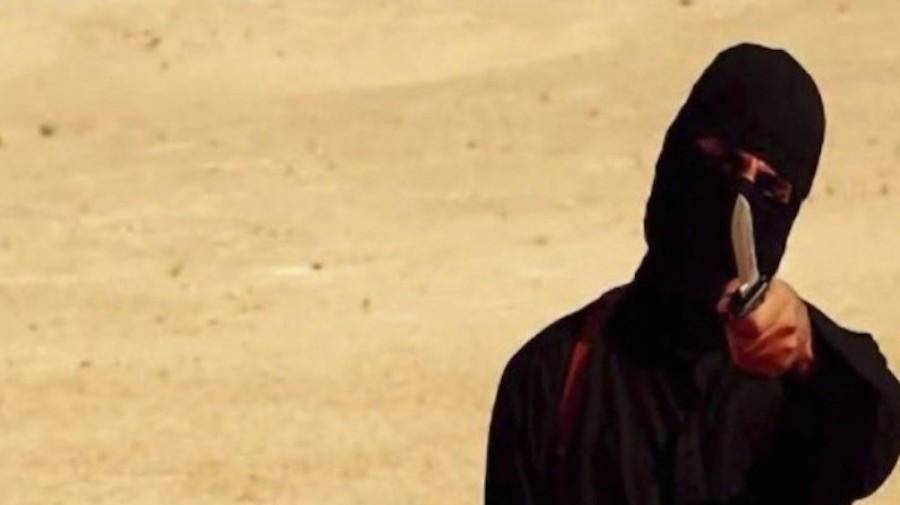No human being should have to bear witness to the execution of another. But my colleagues at Storyful have been living with that obligation for years, as they process and parse increasingly brutal imagery from across the social web. And yet nothing prepared us for the killing of Muath al Kasaesbeh, burned alive in an act of almost cinematic evil.<
My colleagues Jenny Hauser and Eliza Mackintosh have both written powerful posts about the wider issues arising from the killing. I end this brief series by writing from a deeply personal perspective, motivated by my profound impotence as a witness and possible irrelevance as a journalist.
I’m not alone in feeling a sharp reminder of a new reality, in which reporters have been dislodged as the ultimate arbiters of our collective understanding of the world.
“Thanks to the ubiquity of social media,” wrote Andy Carvin, “It matters less what mainstream media chooses to do, as everyone online now has the capacity to view footage selectively, by their own accord.”
Clearly, that doesn’t absolve journalists, and it certainly doesn’t make them irrelevant. We have a critical, if poorly understood, place in the spread of information and images on the social web. The value of journalism, as a means of separating news from noise, has never been more vital.
History tells us that revolutionary shifts in communication bring upheaval. People cope with uncertainty by turning against those who disagree. The rise of the printing press heralded one of the most violent and chaotic periods in human history, as Nate Silver points out in his book The Signal and the Noise.
We face danger, he writes, “whenever information growth outpaces our understanding of how to process it.”
Today, the value of journalism is in the management of an overabundance of information. Reporters no longer own the story. Their job is to help filter a flood of competing narratives and to connect the most authentic voices to the widest possible audience.
They must also understand the historical significance of the rise of the eyewitness. What we couldn’t see, we couldn’t be held responsible for — but no more. The smartphone now bears witness to war, genocide and systematic oppression with unprecedented authenticity, if not always with consistency or impact.
Journalists have an obligation to build a historical record from an incomprehensible amount of content. Future generations will not forgive us if we don’t embrace our role as the archivists of now.
The killing of Muath al Kasaesbeh is a case in point. A mission-driven group of experienced journalists watched his murder so others did not have to. In cataloging every detail, they played the role of digital coroner, guaranteeing that the record of this crime will stand the test of time and, perhaps in some future court of justice, meet the standard of evidence.
To do justice to this task, the most barbaric video must be preserved in some permanent form. Those of us who have spent years curating social video can testify to the impermanence of YouTube videos, which can disappear for countless reasons. History requires us to download, archive and protect.
But what about an obligation to distribute? Do journalists have a responsibility to share what they see in real-time? I believe the answer is no.
Journalists play the role of connector, helping the most authentic sources reach the audience they deserve. They can also be the carrier, patient zero for a virulent strain of hate. The one thing they are not is the sole eyewitness to an event. They can no longer hide their choices behind an outdated duty to expose an unseen truth.
“Without communication,” said Marshall McLuhan, “terrorism would not exist.” The utility of terror is in direct relationship to the numbers who witness it. The rapidly evolving literature of online jihad is explicit in its embrace of “propaganda by deed”. In the words of one prominent jihadi, the “keyboard equals Kalashnikov”.
Today, propaganda is packaged in self-contained spectacles with a cinematic sensibility. The expert edits taking us from the somber, dignified face of Muath al Kasaesbeh to the gasoline-soaked torch of the executioner. The foreboding is sharpened by a carefully calibrated pause.
The journalist who has watched, catalogued and contextualized this savage ritual has done their job. Any further action makes them complicit in a unique form of social terrorism.
Some journalists feel obliged to confront their audience with the graphic reality of terror. But if they have reported from war zones, or natural disasters, they will know images of death are a Class-A narcotic whose impact is lessened every time it is administered. The more we journalists seek to shock in the service of truth, the deeper we sink into irrelevance. The more we compete for attention, the less chance we have of earning it.
The propaganda of the death cult is not ours to share. But neither it is ours to ban.
We cannot choke off what Margaret Thatcher once called the “oxygen of publicity”.
We couldn’t if we tried. The social web has made sure of that.
Yet, while journalists no longer have the right to tell us what to watch, they do have new obligations. The growth of information has long since outstripped our capacity to process it. If journalism is to remain relevant, it must give its users the ability to make choices in the face of unlimited choice. It must help humanity — and future generations of humanity — understand the savagery that killed a man called Muath al Kaseasbeh. But it must also free us of the obligation to witness his death through the eyes of his murderers.



